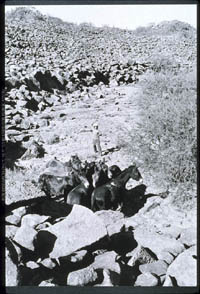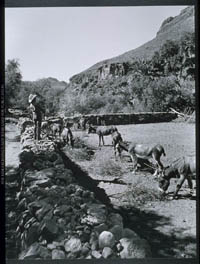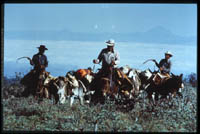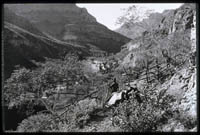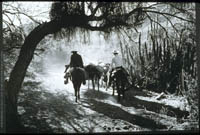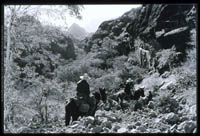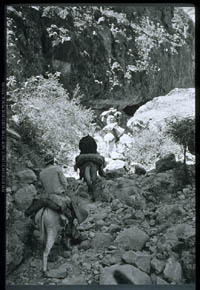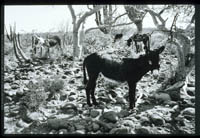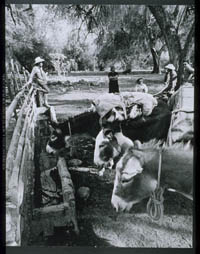
|
Beasts of Burden In mission times, horses and mules, particularly the latter, were indespensable for the transport of men and materials. Missions could not have been established or maintained without them. California's Hispanic society was equally dependent and it perpetuated and developed the horse-related knowledge and skills that had been brought from Spain and adapted continuously in the New World. Before the paved road was built on the peninsula, few ranchers had cars or trucks to use even on level ground. Mountain ranchers were as dependent on pack animals as their ancestors had been two centures before. Each rancher made semi-weekly or monthly trips to a town or village. His beasts hauled out his produce and hauled home his purchases. A traveler in the sierras was struck by the amount of equestrian activity as animals were rounded up, escorted along trails, loaded and unloaded on the way, fed, watered, packs adjusted, etc. These routines conjured up remarkable reminders of our common past.
|
|
|
Burros When horses and mules were introduced to the peninsula, they suffered just as severely from depredations by mountain lions and Indians as did cattle and did not adapt as well to browsing on native shrubs. Burros, on the other hand, adapted easily and came to be used as poor substitues for mules, both for pack and saddle. Burros are considered comical, the butt of many jokes. They are universally held to be cunning, contrary, and fractious. A man who must employ burros is derided for his low estate and bad fortune even by his fellows who, any day, will of necessity resort to the same source of power and mobility. No one admits to inconsistency in all this; it is one of the mountain men's oldest games.
|
|
